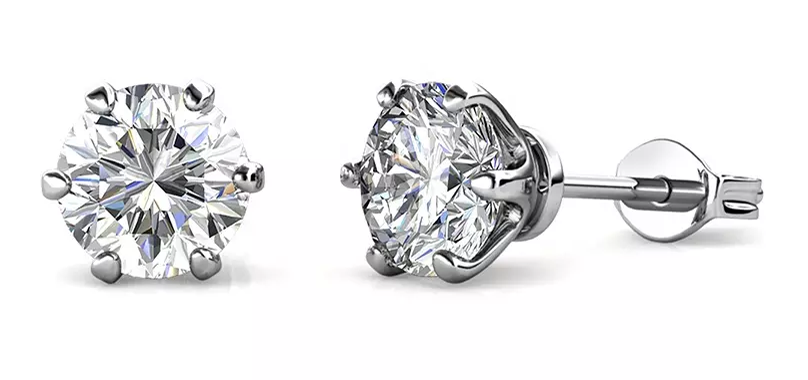Black Pearls: Gemstone and Jewelry
Black pearls, also known as Tahitian pearls, are an exquisite and rare gemstone that continue to captivate the hearts of jewel lovers worldwide. These gems are treasured for their unique beauty, lustre, and mystique. The pearl is formed from the black-lip oyster, which is found in the lagoons and atolls of French Polynesia, the Cook Islands, and other areas of the South Pacific. In this article, we will explore the history, properties, and symbolism of black pearls, as well as the various uses of these stunning gems in jewelry.

History of Black Pearls:
The history of black pearls can be traced back to the 18th century, when European explorers and traders first encountered the Polynesian islands. These explorers were fascinated by the black pearls they found on the islands, and soon began to trade them widely. However, it was not until the 19th century that black pearls began to be appreciated for their beauty, rather than just their rarity. The first black pearls were discovered in the Tuamotu Archipelago in French Polynesia, which became the center of the pearl industry in the South Pacific.
The first recorded black pearl was found in 1857 by a British sailor named Captain Cook. Cook was exploring the island of Tahiti when he discovered a black pearl that was eventually sold for a large sum of money. In the years that followed, black pearls became increasingly fashionable in Europe and America. They were especially popular with the wealthy, who prized them as symbols of luxury and refinement.
The demand for black pearls grew so high that by the late 19th century, most of the pearl beds in the South Pacific had been depleted, and the pearl industry was in decline. It was not until the 1960s that black pearls saw a revival in popularity. This was due in part to the efforts of a Frenchman named Jean-Marie Domard, who discovered a way to culture black pearls. Cultured pearls are those that are grown under controlled conditions, rather than being formed naturally in the wild.
Domard's discovery revolutionized the pearl industry, making it possible to produce black pearls on a much larger scale than had previously been possible. Today, the cultivation of black pearls is a major industry in French Polynesia, the Cook Islands, and other parts of the South Pacific. Black pearls are still highly valued for their rarity, and the process of cultivating them remains a highly specialized and complex art.

Properties of Black Pearls:
Black pearls are renowned for their unique beauty and lustre. These gems are typically large, with an average diameter of around 10mm. They have a distinctive dark colour, ranging from dark green to a rich black hue. The colour is caused by the presence of melanin, a pigment that is also found in human skin and hair. Black pearls are formed inside the black-lip oyster, which is one of the largest species of oysters. The oysters live in the shallow waters of lagoons and atolls, where they feed on plankton and other tiny organisms.
The formation of a pearl begins when a tiny piece of grit or other irritant enters the oyster's shell. To protect itself, the oyster begins to secrete layers of nacre, a substance that forms the outer surface of the pearl. The lustre of a black pearl is caused by the way that light is refracted as it passes through the layers of nacre. This gives the pearl a unique, iridescent glow that is difficult to replicate in other gemstones.

Symbolism of Black Pearls:
Black pearls have long been associated with wealth, luxury, and status. They are often seen as a symbol of sophistication and refinement, and are highly prized by those who seek to convey an air of elegance and style. In addition to their associations with wealth and status, black pearls are also thought to have a range of symbolic meanings.
In many cultures, pearls are seen as a symbol of purity and innocence, and are often given as gifts to mark important life events such as weddings and christenings. In some cultures, black pearls are believed to have healing properties, and are used in traditional medicine to treat a range of ailments. They are also associated with the element of water, and are said to have a calming and soothing effect on the emotions.

Uses of Black Pearls in Jewelry:
Black pearls are used in a wide range of jewelry designs, from simple pearl necklaces to elaborate statement pieces. They are often paired with other gemstones, such as diamonds, sapphires, and emeralds, to create striking and elegant designs. One of the most popular uses of black pearls in jewelry is in necklaces. A simple strand of black pearls can add a touch of sophistication to any outfit, while a more elaborate necklace can be a stunning statement piece.
Black pearls can also be used in earrings, bracelets, and rings, either alone or in combination with other gemstones. Black pearls are often used in contemporary jewelry designs, but they are also a popular choice for more traditional styles. In some cultures, black pearls are used in traditional ceremonial jewelry, such as necklaces and headdresses worn by brides and other ceremonial participants.

Black pearls are a truly unique and beautiful gemstone, prized for their rarity and striking beauty. They have a long and interesting history, and have been prized by people around the world for centuries. Today, black pearls continue to be a popular choice for jewelry designers and collectors, who appreciate their unique lustre and beauty. Whether worn alone or in combination with other gemstones, black pearls are a stunning and sophisticated choice that will never go out of style.






















Leave a comment